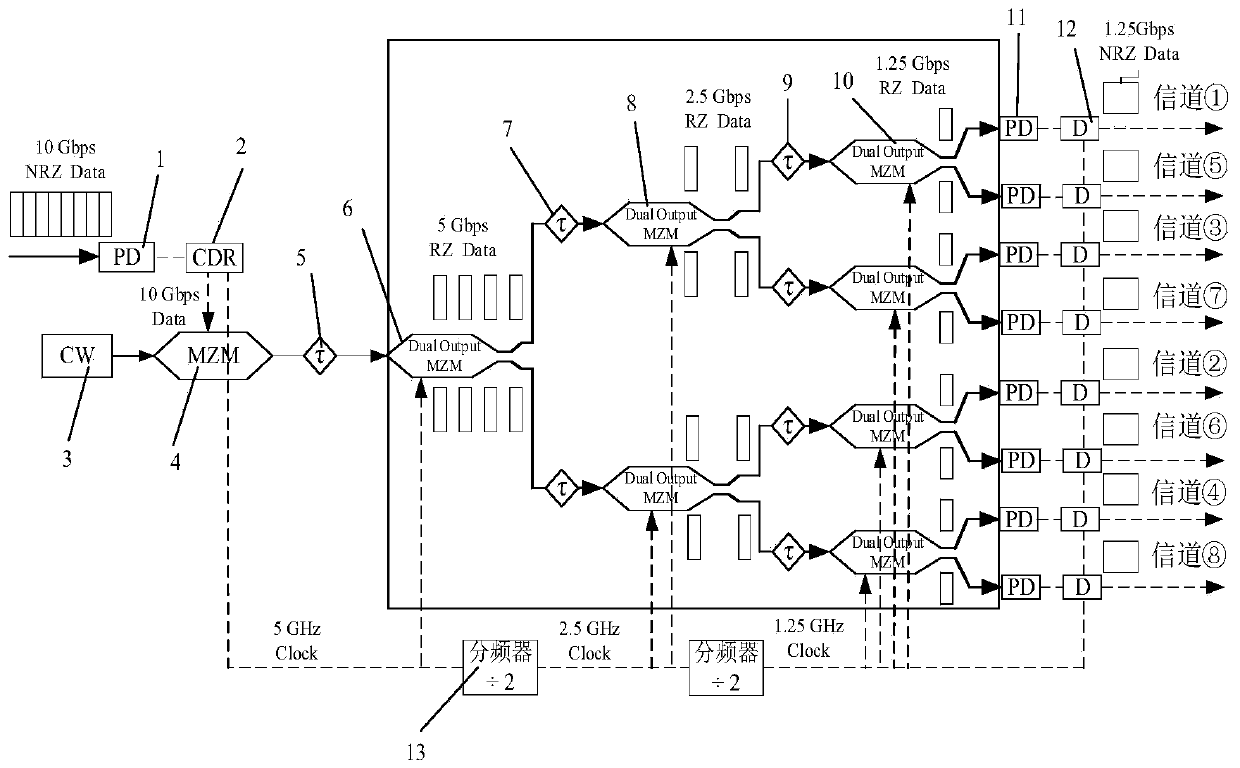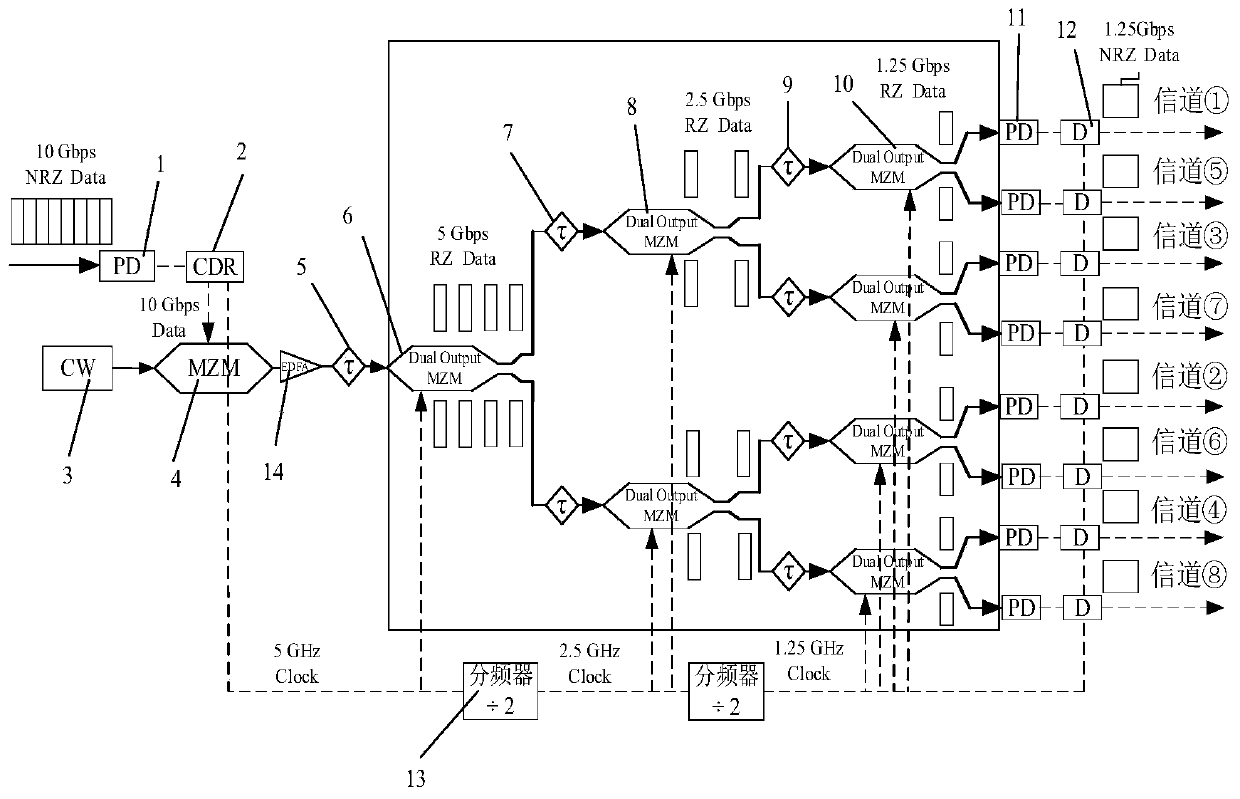High-speed laser-microwave link serial-parallel conversion method
A microwave link and conversion method technology, which is applied in parallel/serial conversion, code conversion, electrical components, etc., can solve the problems of the mismatch between the rate of the laser link and the microwave link, and the difficulty of laser signal conversion, etc., to achieve zero The effects of packet loss, high isolation, and low crosstalk
- Summary
- Abstract
- Description
- Claims
- Application Information
AI Technical Summary
Problems solved by technology
Method used
Image
Examples
Embodiment 1
[0093] see figure 1 , taking 10Gbps laser data speed reduction as an example:
[0094] (1) The 10Gbps high-speed NRZ optical signal is converted into an electrical signal by the first photodetector 1 (PD);
[0095] (2) The converted electrical signal enters the clock data recovery unit 2 (CDR), and the 10Gbps data and 5GHz clock signal are recovered by the clock data recovery unit 2 (CDR);
[0096] (3) The laser 3 emits continuous light to the Mach-Zehnder modulator 4, and the 10Gbps data is re-modulated to the optical carrier by the Mach-Zehnder modulator 4 (MZM), converted into a 10Gbps optical signal and enters the first all-optical serial parallel conversion unit;
[0097] (4) In the first all-optical serial-to-parallel conversion unit, the first dual-output Mach-Zehnder modulator 6 realizes the selection and separation of odd and even channels, and by controlling the first optical delay device (ODL), the 5GHz clock and the 10Gbps optical signal pair Accurate, obtain 2 ...
Embodiment 2
[0104] The difference from Embodiment 1 is that, see figure 2 , step 1.3): the 10Gbps data is remodulated onto the optical carrier through the Mach-Zehnder modulator 4 (MZM), converted into a 10Gbps optical signal and first enters the amplifier 14 for amplification, and then enters the first all-optical serial-to-parallel conversion unit; the amplifier 14 It can be an erbium-doped fiber amplifier.
PUM
 Login to View More
Login to View More Abstract
Description
Claims
Application Information
 Login to View More
Login to View More - R&D
- Intellectual Property
- Life Sciences
- Materials
- Tech Scout
- Unparalleled Data Quality
- Higher Quality Content
- 60% Fewer Hallucinations
Browse by: Latest US Patents, China's latest patents, Technical Efficacy Thesaurus, Application Domain, Technology Topic, Popular Technical Reports.
© 2025 PatSnap. All rights reserved.Legal|Privacy policy|Modern Slavery Act Transparency Statement|Sitemap|About US| Contact US: help@patsnap.com


